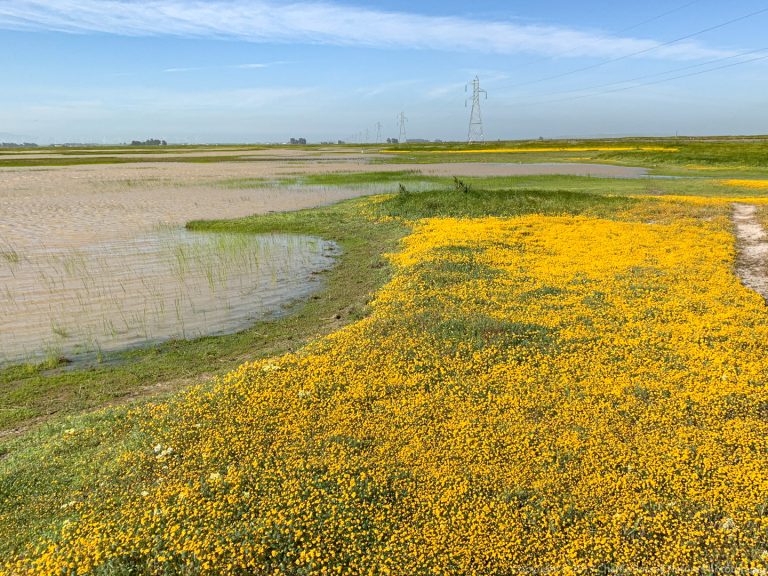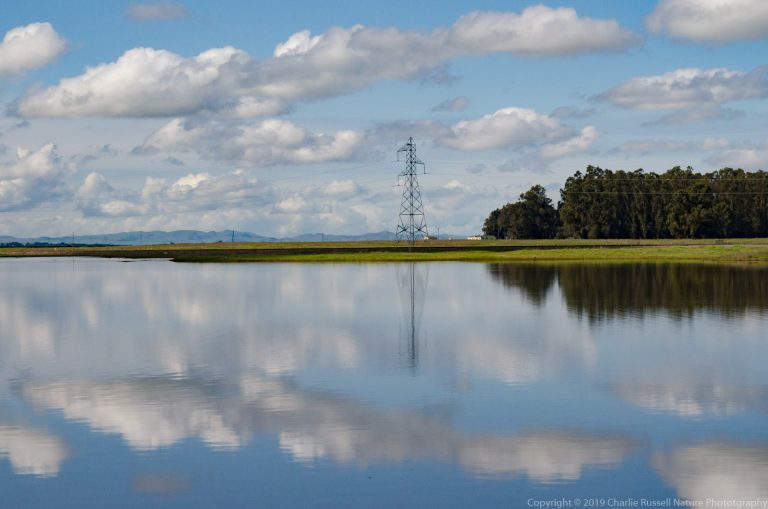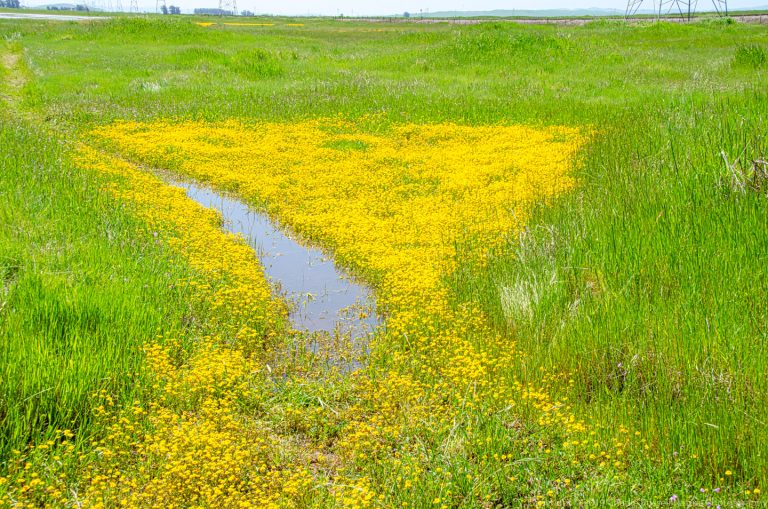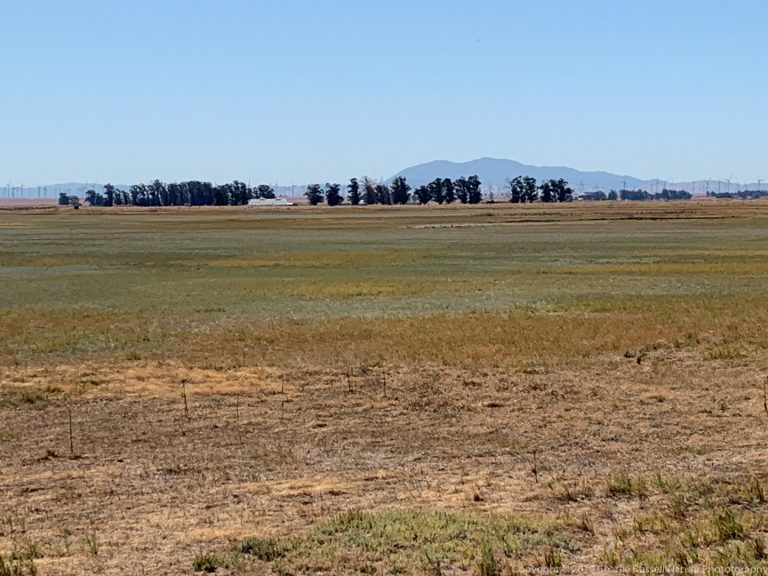What is a Vernal Pool?
A vernal pool is a temporary body of water that forms when an impermeable layer at or near the surface of the landscape of low mounds and depressions traps winter rain to create shallow pools. The pools will dry completely by summer. They create a habitat that supports a wide range of special plants and animals.
While many places in the world have temporary rain puddles, the mass displays of vernal pool flowers occur only where there are mild wet winters followed by hot dry summers, a pattern that is called a Mediterranean climate. The combination of water-trapping soil and a Mediterranean climate is unique to California and a handful of other places.

At Jepson Prairie, the impenetrable soil layer is a claypan that has formed from soils that were deposited 60 to 100 thousand years ago. This layer is a foot or two below the surface. It also forms the bottom of Olcott Lake.
At Jepson Prairie there are two kinds of vernal pools, each with its own collection of special plants and animals. In the higher areas you will find the shorter-lived clear water vernal pools. At the lowest point of the Preserve you will find Olcott Lake, a larger “playa” pool that lasts longer and is more turbid.
Three Phases of a Vernal Pool
Vernal pools are generally considered to have three phases: Aquatic, Flowering, and Drought. Each phase is important in the annual vernal pool “life cycle”.
Aquatic Phase

The aquatic phase begins shortly after the first fall rains. Rainfall is trapped by the claypan, and once the soils are saturated, additional rainfall perches above the clay and the pools begin to fill. The aquatic phase lasts until the winter rainstorms have passed and warmer spring weather sets in. Small pools may dry between storms, while the larger pools and playas will remain ponded until late spring or early summer.
During this phase several things are happening, including:
- Amphibians mate and lay eggs in vernal pools. At Jepson these are the California Tiger Salamander and Pacific Chorus Frogs. They only live in the pools in the aquatic phase.
- Crustaceans such as the Conservancy Fairy Shrimp and Vernal Pool Tadpole Shrimp live their entire life cycle during the aquatic phase. They hatch, grow, and develop cysts that can survive the harsh drought phase.
- Many special vernal pool plants start to grow. Most plants would drown if flooded for long periods. Vernal pool plants deal with this in several unique ways. Some pipe air to their roots through long, hollow stems or leaves. Some absorb atmospheric gasses (air) directly from the water. Other vernal pool plants bring air to their roots by producing floating leaves.
In addition, many insects, migrating waterfowl, and shorebirds rely on the flooded vernal pools.
Flowering Phase

The flowering phase at Jepson Prairie begins earlier than in most vernal pool landscapes. It also overlaps with the end of the aquatic phase. Flowers begin blooming in the grasslands and on the edges of the vernal pools in early to mid-March. The flowering phase continues until all of the pools and playas have completely dried.
Over 200 species of plants grow in California vernal pools. Of those, half are entirely endemic to this unique habitat. Plants that grow in vernal pools have several adaptations that allow them to survive the extremes of flood and drought. Most vernal pool plants are annuals, living only during the short winter and spring seasons before setting seed and dying. These plants tend to be of small stature, but with relatively large flowers. Their goal is not to grow big and survive a long time, but to reproduce and make plenty of seeds for future generations.
Having few leaves and very showy flowers is part of the vernal pool plants’ strategy for producing abundant seed. The concentric circles, ribbons and patches of pink, yellow, white and blue blossoms effectively attract their pollinators. While many different types of insects visit vernal pool flowers, some have evolved to depend on only one or a few types of flowers.
Drought Phase

During the hot, dry summer months, vernal pools lie brown and barren. The drought phase begins as the last of the water evaporates and the soil dries out.
- The crustaceans have deposited their cysts to ensure the next generation.
- Most of the vernal pool plants have also set seed and have withered and died.
- The amphibians that use vernal pools for only part of their life cycle have moved into gopher burrows in the grassland. California Tiger Salamanders and Pacific Chorus Frogs will spend the drought phase underground.

